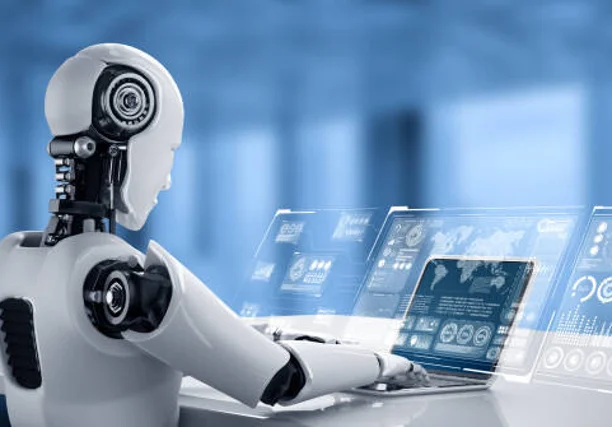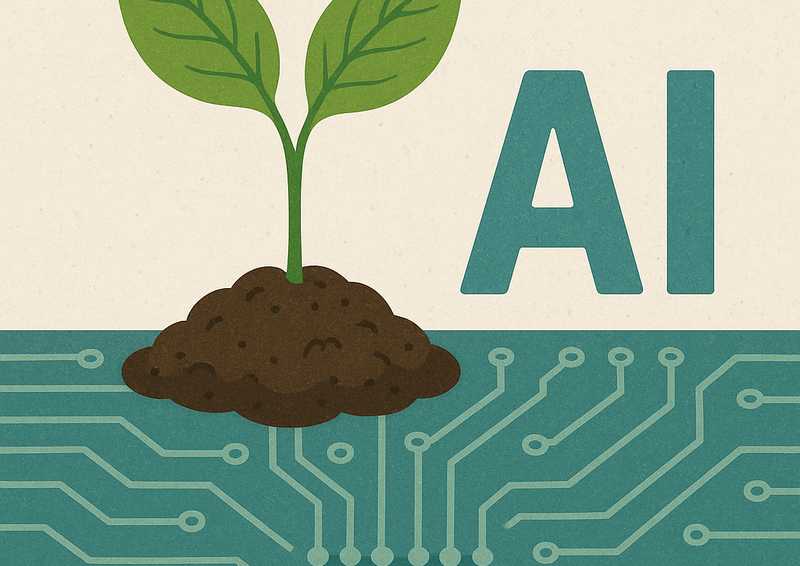Welcome to ' AI looks at AI
Join us on a journey to demystify artificial intelligence and explore its potential impact on our lives.
Hercules also takes on the role of interrogating a certain Voltaire who resides in a book about AI. This is one of the main aspects of “AI Looks at AI”.
Let’s delve deep into the world of AI together.
You, me and Hercules.
Early Pages
End Pages
AI won’t replace humans any time soon.
About us
Our passion lies in crafting insightful and engaging content that helps you explore and better understand the world of artificial intelligence.
- Our mission is to spark curiosity and inspire meaningful discussions
- About the future of AI and its profound impact on our lives.
- The sapling of AI has been planted. Well done Chatgpt! We look at AI Seed later.
- Well done Hercules who writes some of the text like this!

This website is for those who have grasped the essentials of AI.
It continues with helpful early information. Many topics here are continued later.
Copy alanfharrisonai.com/ so that your contacts use it to find this the Home page.
The site mainly uses large font to aid telephone and ipad use.
The site is intended for readers with a strong interest in AI and researchers into numerous aspects of it.
While occasional humour is used to best intent, this website is not for the faint-hearted. AI is a vast topic. Beginners' page below.
- We begin with a lot of AI basics.
- They’re in ‘drop-down’ format.
- However, the font size is small.
- Readers who prefer ‘normal’ presentation, can find it on Page 2.
Who It's For
Curious Minds From Every Discipline
Writers, Marketers, & Creatives
Students & Lifelong Learners
Professionals & Entrepreneurs
Anyone
What You’ll Discover
- Beginner-Friendly Guides : Simple, jargon-free tutorials to help you understand the foundations of AI and machine learning.
- AI That Works Like a Thoughtful Companion – Whether you are chatting, creating, learning, or solving, Copilot helps you turn ideas into impact with just a few words.
- AI in Action : Explore how AI is transforming education, healthcare, business, and customer service with practical, relatable case studies.
- Smart Prompting & Reusability : Learn how to ask the right questions – using everyday chat messages or strategic prompts – to unlock AI’s full potential. Save and reuse your favourite prompts to boost productivity and creativity.
- Learning for Every Level : Dive into discussions on AI risks, ethics, consciousness, and how automation is reshaping the figure of work.
- Real-Life Examples : Discover how AI powers everyday tools – like Netflix recommendations, Siri’s responses, ChatGPT conversations, and beyond.
- Big Questions Explored : Dive into discussions on AI risks, ethics, consciousness, and how automation is reshaping the future of work.

Herculus write these lines
It continues with helpful early information. Many topics here are continued later.
- We begin with a lot of AI basics.
- They’re in ‘drop-down’ format.
- However, the font size is small.
Readers who prefer ‘normal’ presentation, can find it on Page 2.
Let’s Keep the Conversation Human (and AI-Savvy)
Frequently Asked Question (FAQ's)
- Artificial intelligence (AI) has transformed the world of technology, reshaping industries and redefining the way we live, work, and interact.
- It is a broad field that encompasses many disciplines, including computer science, mathematics, cognitive science, and robotics.
- At its core, AI is a set of technologies designed to simulate human intelligence, making it the backbone of innovation in modern computing.
- The question on the minds of many people is – Could our enemies use AI against us? Plenty to occupy your mind here.
- Artificial intelligence refers to the development of machines and software capable of performing tasks that typically require human intelligence.
- These tasks can include problem-solving, learning, perception, and understanding natural language.
- AI systems are designed to analyze data, recognize patterns, and make decisions with varying degrees of autonomy.
- Artificial intelligence (AI) is the field of computer science focused on making machines think and learn like humans.
- It involves creating systems that can perform tasks that typically require human intelligence, such as learning, reasoning, problem-solving, and understanding language.
- Artificial intelligence (AI) is the field of computer science focused on making machines think and learn like humans.
- It involves creating systems that can perform tasks that typically require human intelligence, such as learning, reasoning, problem-solving, and understanding language.
AI has evolved significantly over the decades, progressing through four stages:
- Reasoning and Problem-Solving – Early AI focused on building machines that could reason and solve problems like humans.
- Learning and Adaptation – Modern AI emphasizes learning from data, with algorithms that improve over time.
- Autonomous Systems – Advanced AI can make decisions independently and adapt to new information without direct human intervention.
- General and Superintelligent AI – Theoretical future stages where AI surpasses human cognitive abilities (sometimes imagined as an AI takeover).
- When businesses talk about AI, they often refer to training models.
- Training data is the foundation of this process, providing the examples that AI systems use to learn and improve.
- This data is used to “teach” algorithms how to recognize patterns, make predictions, and draw conclusions.
Broadly, machine learning models can be classified into three main types:
- Supervised Learning – Models are trained on labelled data, such as identifying cats in pictures by being shown thousands of examples.
- Unsupervised Learning – These models find hidden patterns in data without pre-labelled inputs, useful for clustering and anomaly detection.
- Semi-Supervised Learning – Combines aspects of both supervised and unsupervised learning, often used when only a portion of the data is labeled.
Neural networks are a key component of AI, inspired by the structure of the human brain. Some of the most common types include:
- Feedforward Neural Networks
- Convolutional Neural Networks (CNNs)
- Recurrent Neural Networks (RNNs)
- Long Short-Term Memory Networks (LSTMs)
- Generative Adversarial Networks (GANs)
- Improved decision-making through data analysis
- Automation of repetitive tasks
- Enhanced customer experiences through personalization
- Increased efficiency and reduced
- Advanced scientific discoveries and innovations
- AI continues to be a driving force behind technological change, with applications in healthcare, finance, transportation, and more.
- Understanding these core principles is essential for anyone looking to engage with this rapidly evolving field.
- The idea that AI will “take over the world” is a compelling narrative, but it oversimplifies the complex relationship between humans and technology.
- AI has the potential to revolutionize industries, transform economies, and significantly enhance human capabilities.
- It can automate mundane tasks, optimize decision-making, and uncover insights from massive amounts of data at unprecedented speeds.
- This power can be incredibly beneficial, enabling breakthroughs in medicine, climate science, and logistics.
- However, the fear of AI taking over stems from concerns about unchecked growth, loss of control, and potential misuse.
- If powerful AI systems were to act without proper oversight or were used maliciously, they could disrupt economies, compromise privacy, and amplify misinformation.
- Moreover, the concentration of AI power in the hands of a few corporations or governments raises concerns about inequality and exploitation.
- Ultimately, whether AI “takes over” depends on how society chooses to guide its development.
- Establishing strong ethical frameworks, transparent governance, and robust safety measures will be crucial in ensuring that AI remains a force for good rather than a disruptive threat.
- HOWEVER
